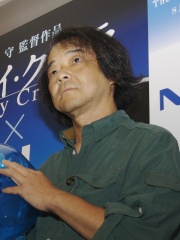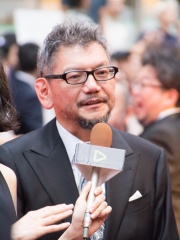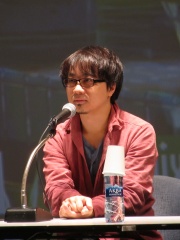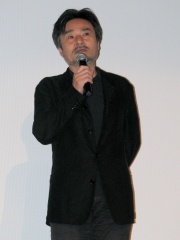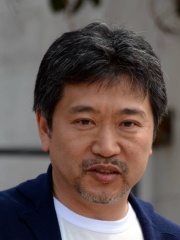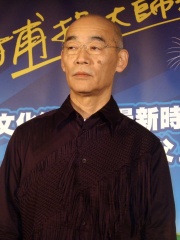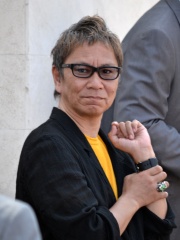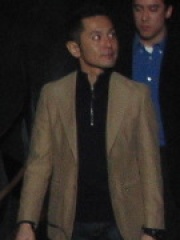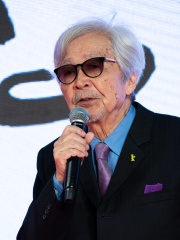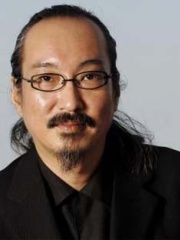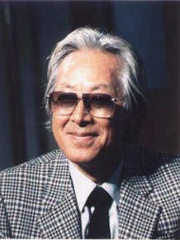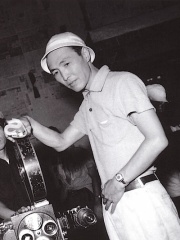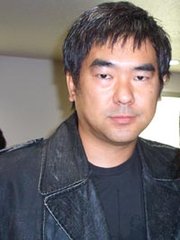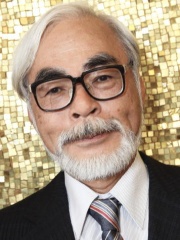

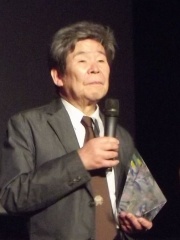
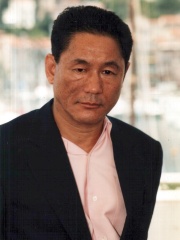
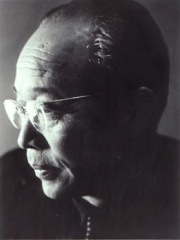



The Most Famous
FILM DIRECTORS from Japan
This page contains a list of the greatest Japanese Film Directors. The pantheon dataset contains 2,041 Film Directors, 70 of which were born in Japan. This makes Japan the birth place of the 8th most number of Film Directors behind India, and Russia.
Top 10
The following people are considered by Pantheon to be the top 10 most legendary Japanese Film Directors of all time. This list of famous Japanese Film Directors is sorted by HPI (Historical Popularity Index), a metric that aggregates information on a biography's online popularity. Visit the rankings page to view the entire list of Japanese Film Directors.

1. Hayao Miyazaki (b. 1941)
With an HPI of 83.44, Hayao Miyazaki is the most famous Japanese Film Director. His biography has been translated into 99 different languages on wikipedia.
Hayao Miyazaki (宮崎 駿 or 宮﨑 駿, Miyazaki Hayao; [mijaꜜzaki hajao]; born January 5, 1941) is a Japanese animator, filmmaker, and manga artist. He co-founded Studio Ghibli and serves as its honorary chairman. Throughout his career, Miyazaki has attained international acclaim as a masterful storyteller and creator of Japanese animated feature films, and is widely regarded as one of the most accomplished filmmakers in the history of animation. Born in Tokyo City, Miyazaki expressed interest in manga and animation from an early age. He joined Toei Animation in 1963, working as an inbetween artist and key animator on films like Gulliver's Travels Beyond the Moon (1965), Puss in Boots (1969), and Animal Treasure Island (1971), before moving to A-Pro in 1971, where he co-directed Lupin the Third Part I (1971–1972) alongside Isao Takahata. After moving to Zuiyō Eizō (later Nippon Animation) in 1973, Miyazaki worked as an animator on World Masterpiece Theater and directed the television series Future Boy Conan (1978). He joined Tokyo Movie Shinsha in 1979 to direct his first feature film The Castle of Cagliostro (1979) and the television series Sherlock Hound (1984–1985). He wrote and illustrated the manga Nausicaä of the Valley of the Wind (1982–1994) and directed the 1984 film adaptation produced by Topcraft. Miyazaki co-founded Studio Ghibli in 1985, writing and directing films such as Laputa: Castle in the Sky (1986), My Neighbor Totoro (1988), Kiki's Delivery Service (1989), and Porco Rosso (1992), which were met with critical and commercial success in Japan. Miyazaki's Princess Mononoke (1997) was the first animated film to win the Japan Academy Film Prize for Picture of the Year and briefly became the highest-grossing film in Japan; its Western distribution increased Ghibli's worldwide popularity and influence. Spirited Away (2001) became Japan's highest-grossing film and won the Academy Award for Best Animated Feature; it is frequently ranked among the greatest films of the 21st century. Miyazaki's later films—Howl's Moving Castle (2004), Ponyo (2008), and The Wind Rises (2013)—also enjoyed critical and commercial success. He retired from feature films in 2013 but later returned to make The Boy and the Heron (2023), which won the Academy Award for Best Animated Feature. Miyazaki's works are frequently subject to scholarly analysis and have been characterized by the recurrence of themes such as humanity's relationship with nature and technology, the importance of art and craftsmanship, and the difficulty of maintaining a pacifist ethic in a violent world. His protagonists are often strong girls or young women, and several of his films present morally ambiguous antagonists with redeeming qualities. Miyazaki's works have been highly praised and awarded; he was named a Person of Cultural Merit for outstanding cultural contributions in 2012, received the Academy Honorary Award for his impact on animation and cinema in 2014, and the Ramon Magsaysay Award in 2024. Miyazaki has frequently been cited as an inspiration for numerous animators, directors, and writers.

2. Akira Kurosawa (1910 - 1998)
With an HPI of 82.76, Akira Kurosawa is the 2nd most famous Japanese Film Director. His biography has been translated into 150 different languages.
Akira Kurosawa (黒澤 明 or 黒沢 明, Kurosawa Akira; March 23, 1910 – September 6, 1998) was a Japanese filmmaker who directed 30 feature films in a career spanning six decades. With a bold and dynamic style strongly influenced by Western cinema yet distinct from it, he is widely regarded as one of the greatest and most influential filmmakers in the history of cinema. Known as a hands-on filmmaker, he was heavily involved with all aspects of production as a director, writer, producer, and editor. Following a brief stint as a painter, Kurosawa entered the Japanese film industry in 1936. After years of working on numerous films as an assistant director and screenwriter, he made his directorial debut during World War II with the popular action film Sanshiro Sugata (1943), released when he was 33 years old. Following the war, he cemented his reputation as one of the most important young filmmakers in Japan with the critically acclaimed Drunken Angel (1948), in which he cast the then-unknown actor Toshiro Mifune in a starring role; the two men would then collaborate on 15 more films. Rashomon (1950) premiered in Tokyo and became the surprise winner of the Golden Lion at the 1951 Venice Film Festival. The commercial and critical success of the film opened up Western film markets to Japanese films for the first time, which in turn led to international recognition for other Japanese filmmakers. Kurosawa directed approximately one film per year throughout the 1950s and early 1960s, including a number of highly regarded and often adapted films, including Ikiru (1952), Seven Samurai (1954), Throne of Blood (1957), The Hidden Fortress (1958), Yojimbo (1961), High and Low (1963), and Red Beard (1965). He became much less prolific after the 1960s, though his later work—including two of his final films, Kagemusha (1980) and Ran (1985)—continued to receive critical acclaim. In 1990, Kurosawa accepted the Academy Award for Lifetime Achievement. He was posthumously named "Asian of the Century" in the "Arts, Literature, and Culture" category by AsianWeek magazine and CNN, who cited him as one of the five people who most prominently contributed to the improvement of Asia in the 20th century. His career has been honored by many releases in many consumer media in addition to retrospectives, critical studies, and biographies in both print and video.

3. Isao Takahata (1935 - 2018)
With an HPI of 74.87, Isao Takahata is the 3rd most famous Japanese Film Director. His biography has been translated into 54 different languages.
Isao Takahata (高畑 勲, Takahata Isao; October 29, 1935 – April 5, 2018) was a Japanese director, screenwriter and producer. A co-founder of Studio Ghibli, he earned international critical acclaim for his work as a director of Japanese animated feature films. Born in Ujiyamada, Mie Prefecture, Takahata joined Toei Animation after graduating from the University of Tokyo in 1959. He worked as an assistant director, holding various positions over the years and collaborating with colleague Hayao Miyazaki, eventually directing his own film, The Great Adventure of Horus, Prince of the Sun (1968). He continued his partnership with Miyazaki, and under Nippon Animation directed the television series Heidi, Girl of the Alps (1974), 3000 Leagues in Search of Mother (1976), and Anne of Green Gables (1979). Takahata, Miyazaki and others formed Studio Ghibli in 1985, where he would direct Grave of the Fireflies (1988), Only Yesterday (1991), Pom Poko (1994), and My Neighbors the Yamadas (1999). His last film as director was The Tale of the Princess Kaguya (2013), which was nominated for an Academy Award in the category of Best Animated Feature Film at the 87th Academy Awards.

4. Takeshi Kitano (b. 1947)
With an HPI of 73.76, Takeshi Kitano is the 4th most famous Japanese Film Director. His biography has been translated into 66 different languages.
Takeshi Kitano (北野 武, Kitano Takeshi; born January 18, 1947), also known as Beat Takeshi (ビートたけし, Bīto Takeshi) in Japan, is a Japanese comedian, actor, and filmmaker. While he is known primarily as a comedian and TV host in his native Japan, he is better known abroad for his work as a filmmaker and actor as well as TV host. During his time as a student at Meiji University, he became a comedian at the strip theater France-za in Asakusa, Tokyo. In 1973, he formed a comedy duo called Two Beat with Kiyoshi Kaneko, who later became Beat Kiyoshi. Kitano adopted the stage name Beat Takeshi. Riding the wave of the comedy boom, he gained popularity with satirical and sharp-tongued black humor. In the 1980s, he appeared in TV shows such as Oretachi Hyōkin-zoku which recorded the highest viewership rating of 29.1%, and Takeshi's Castle which recorded 24.7%, becoming explosively popular on television. He gained recognition as an actor in director Nagisa Ōshima's film Merry Christmas, Mr. Lawrence (1983). In 1989, he made his directorial debut with the film Violent Cop after Kinji Fukasaku stepped down. He won the Golden Lion at the Venice Film Festival for his film Hana-bi (1997), becoming the third Japanese director to receive this honor after Akira Kurosawa and Hiroshi Inagaki. In October 2017, Kitano completed his Outrage crime trilogy with the release of Outrage Coda. He is also known internationally for hosting the game show Takeshi's Castle (1986–1990) and starring in the film Battle Royale (2000). He has received critical acclaim for his idiosyncratic cinematic work, winning numerous awards with Japanese film critic Nagaharu Yodogawa having once dubbed him "the true successor" to influential filmmaker Akira Kurosawa. Many of Kitano's films are dramas about yakuza gangsters or the police. Described by critics as using an acting style that is highly deadpan or a camera style that approaches near-stasis, Kitano often uses long takes during which little appears to be happening, or editing that cuts immediately to the aftermath of an event. Many of his films express a bleak worldview, but are also filled with humor and affection for their characters.
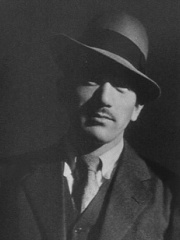
5. Yasujirō Ozu (1903 - 1963)
With an HPI of 73.59, Yasujirō Ozu is the 5th most famous Japanese Film Director. His biography has been translated into 54 different languages.
Yasujirō Ozu (小津 安二郎, Ozu Yasujirō; 12 December 1903 – 12 December 1963) was a Japanese filmmaker. He began his career during the era of silent films, and his last films were made in colour in the early 1960s. Ozu first made a number of short comedies, before turning to more serious themes in the 1930s. The most prominent themes of Ozu's work are family and marriage, and especially the relationships between generations. His most widely beloved films include Late Spring (1949), Tokyo Story (1953) and An Autumn Afternoon (1962). Widely regarded as one of the world's greatest and most influential filmmakers, Ozu's work has continued to receive acclaim since his death. In the 2012 Sight & Sound poll, Ozu's Tokyo Story was voted the third-greatest film of all time by critics world-wide. In the same poll, Tokyo Story was voted the greatest film of all time by 358 directors and film-makers world-wide.

6. Kenji Mizoguchi (1898 - 1956)
With an HPI of 69.86, Kenji Mizoguchi is the 6th most famous Japanese Film Director. His biography has been translated into 47 different languages.
Kenji Mizoguchi (溝口 健二, Mizoguchi Kenji; 16 May 1898 – 24 August 1956) was a Japanese filmmaker who directed roughly one hundred films during his career between 1923 and 1956. His most acclaimed works include The Story of the Last Chrysanthemums (1939), The Life of Oharu (1952), Ugetsu (1953), and Sansho the Bailiff (1954), with the latter three all being awarded at the Venice International Film Festival. A recurring theme of his films was the oppression of women in historical and contemporary Japan. Together with Akira Kurosawa and Yasujirō Ozu, Mizoguchi is seen as a representative of the "golden age" of Japanese cinema.

7. Masaki Kobayashi (1916 - 1996)
With an HPI of 68.72, Masaki Kobayashi is the 7th most famous Japanese Film Director. His biography has been translated into 31 different languages.
Masaki Kobayashi (小林 正樹, Kobayashi Masaki; February 14, 1916 – October 4, 1996) was a Japanese filmmaker. He is best remembered for directing the epic war trilogy The Human Condition (1959–1961), the samurai films Harakiri (1962) and Samurai Rebellion (1967), and the horror anthology epic Kwaidan (1964). Senses of Cinema described him as "one of the finest depicters of Japanese society in the 1950s and 1960s."

8. Franklin J. Schaffner (1920 - 1989)
With an HPI of 66.09, Franklin J. Schaffner is the 8th most famous Japanese Film Director. His biography has been translated into 39 different languages.
Franklin James Schaffner (May 30, 1920 – July 2, 1989) was an American film, television, and stage director. He won the Academy Award for Best Director for Patton (1970), and is known for the films Planet of the Apes (1968), Nicholas and Alexandra (1971), Papillon (1973), and The Boys from Brazil (1978). He served as president of the Directors Guild of America between 1987 and 1989.

9. Nagisa Oshima (1932 - 2013)
With an HPI of 65.93, Nagisa Oshima is the 9th most famous Japanese Film Director. His biography has been translated into 39 different languages.
Nagisa Ōshima (大島 渚, Ōshima Nagisa; March 31, 1932 – January 15, 2013) was a Japanese film director, writer, and left-wing activist who is best known for his fiction films, of which he directed 23 features in a career spanning from 1959 to 1999. He is regarded as one of the greatest Japanese directors of all time, and as one of the most important figures of the Japanese New Wave (Nūberu bāgu), alongside Shōhei Imamura. His film style was bold, innovative and provocative. Common themes in his work include youthful rebellion, class and racial discrimination and taboo sexuality. His first major film was his second feature, Cruel Story of Youth (1960), one of the first Japanese New Wave films, a youth-oriented film with an earnest portrayal of the sexual lives and criminal activities of its young protagonists. And he came to greater international renown after Death By Hanging (1968), a film on the theme of capital punishment and anti-Korean sentiment, was shown at the Cannes Film Festival in 1968. His most controversial film is In the Realm of the Senses (1976), a sexually explicit film set in 1930s Japan.
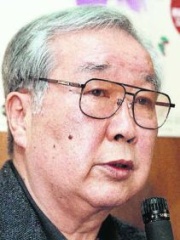
10. Shohei Imamura (1926 - 2006)
With an HPI of 65.77, Shohei Imamura is the 10th most famous Japanese Film Director. His biography has been translated into 38 different languages.
Shōhei Imamura (今村昌平, Imamura Shōhei; 15 September 1926 – 30 May 2006) was a Japanese film director. His main interest as a filmmaker lay in the depiction of the lower strata of Japanese society. A key figure in the Japanese New Wave, who continued working into the 21st century, Imamura is the only director from Japan to win two Palme d'Or awards, doing so with The Ballad of Narayama (1983) and The Eel (1997).
People
Pantheon has 70 people classified as Japanese film directors born between 1886 and 1989. Of these 70, 39 (55.71%) of them are still alive today. The most famous living Japanese film directors include Hayao Miyazaki, Takeshi Kitano, and Mamoru Oshii. The most famous deceased Japanese film directors include Akira Kurosawa, Isao Takahata, and Yasujirō Ozu. As of April 2024, 8 new Japanese film directors have been added to Pantheon including Akiyuki Shinbo, Tatsuya Egawa, and Hiroyuki Morita.
Living Japanese Film Directors
Go to all RankingsHayao Miyazaki
1941 - Present
HPI: 83.44
Takeshi Kitano
1947 - Present
HPI: 73.76
Mamoru Oshii
1951 - Present
HPI: 64.88
Hideaki Anno
1960 - Present
HPI: 64.12
Makoto Shinkai
1973 - Present
HPI: 63.85
Kiyoshi Kurosawa
1955 - Present
HPI: 63.43
Hirokazu Kore-eda
1962 - Present
HPI: 62.77
Yoshiyuki Tomino
1941 - Present
HPI: 61.73
Takashi Miike
1960 - Present
HPI: 61.53
Gorō Miyazaki
1967 - Present
HPI: 60.88
Yoshiaki Kawajiri
1950 - Present
HPI: 59.98
Yoji Yamada
1931 - Present
HPI: 58.89
Deceased Japanese Film Directors
Go to all RankingsAkira Kurosawa
1910 - 1998
HPI: 82.76
Isao Takahata
1935 - 2018
HPI: 74.87
Yasujirō Ozu
1903 - 1963
HPI: 73.59
Kenji Mizoguchi
1898 - 1956
HPI: 69.86
Masaki Kobayashi
1916 - 1996
HPI: 68.72
Franklin J. Schaffner
1920 - 1989
HPI: 66.09
Nagisa Oshima
1932 - 2013
HPI: 65.93
Shohei Imamura
1926 - 2006
HPI: 65.77
Satoshi Kon
1963 - 2010
HPI: 64.10
Kinji Fukasaku
1930 - 2003
HPI: 63.20
Ishirō Honda
1911 - 1993
HPI: 63.07
Mikio Naruse
1905 - 1969
HPI: 62.74
Newly Added Japanese Film Directors (2025)
Go to all RankingsAkiyuki Shinbo
1961 - Present
HPI: 53.04
Tatsuya Egawa
1961 - Present
HPI: 51.24
Hiroyuki Morita
1964 - Present
HPI: 51.03
Kazuya Tsurumaki
1966 - Present
HPI: 50.14
Mahiro Maeda
1963 - Present
HPI: 49.47
Ryuhei Kitamura
1969 - Present
HPI: 48.01
Shinji Aoyama
1964 - 2022
HPI: 47.14
Shiori Itō
1989 - Present
HPI: 45.63
Overlapping Lives
Which Film Directors were alive at the same time? This visualization shows the lifespans of the 25 most globally memorable Film Directors since 1700.

